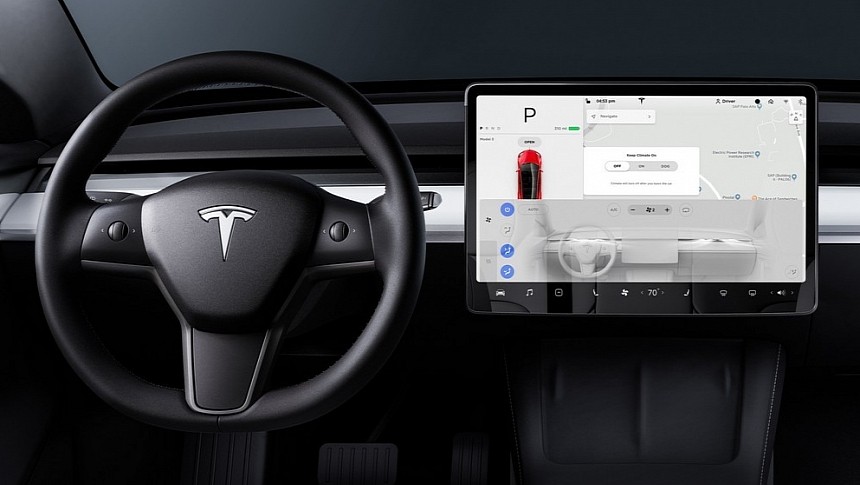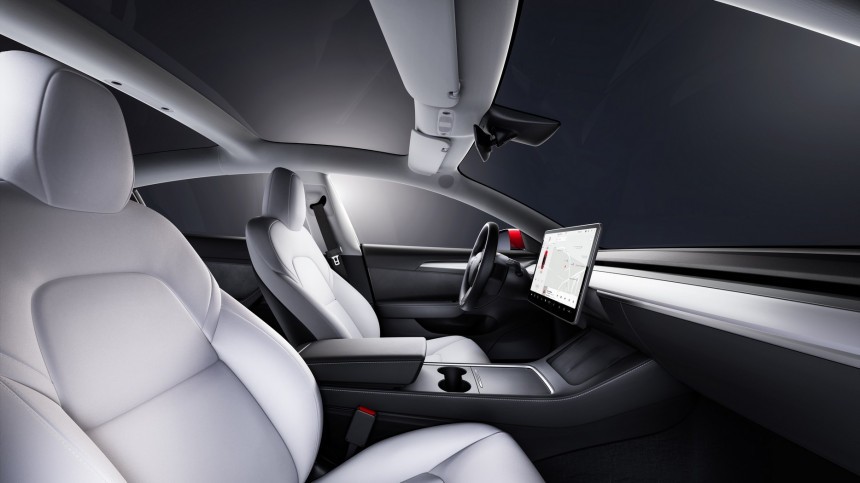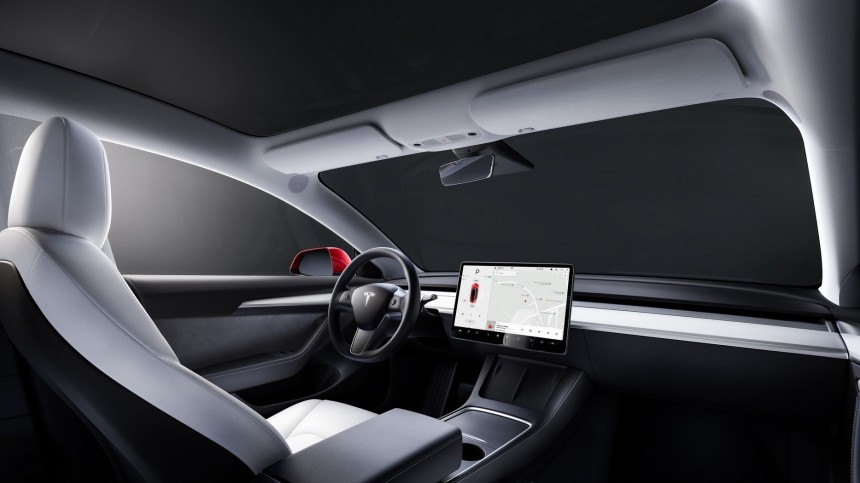Tesla has a new preliminary evaluation (PE) going on with the National Highway Traffic Safety Administration (NHTSA). After receiving "twelve complaints alleging loss of steering control and power steering," the safety regulator decided to open on June 28 the PE 23-014, which involves around 280,000 units of the Model 3 and Model Y produced this year. One of these complaints involved a crash. Luckily, nobody got hurt.
The opening resume for that preliminary evaluation revealed all complaints that led to it, and I decided to take a look at what these customers experienced. Among the 12 issue reports, 9 involve the Model Y, and the other 3 relate to the electric sedan. Although it represented a clear minority in this defective fleet, it was a Model 3 that endured a collision. The driver involved did not reveal where that happened on May 5. The only details they provided were that the "car steering felt stuck," which led it to "slid(e) off the road" and crash into a tree. According to the complainant, "Tesla features did not help stay in the lane or break in an emergency."
The complaints that NHTSA identified range from April 3 until July 19. As the VINs are not reported, only the safety regulator knows the production dates of the vehicles that presented the problems. Only eight of these reports brought a geographic reference. They came from several parts of the US. Surprisingly, most of them (two) are from Virginia. The others were from New York, Hawaii, Georgia, California, Vermont, and Washington.
NHTSA said that 5 of the 12 complaints reported "an inability to steer the vehicle," while the other 7 were more specific and said the issue was with the power steering system. If you think it through, all cases seem to involve the same components. Battery electric vehicles (BEVs) are notoriously heavier than internal combustion engine (ICE) cars. If the power steering fails when they are parked, it will be very difficult to steer these BEVs, especially if they use wider tires. Kevin Paffrath's issues with his Lucid Air are an excellent example of that. However, the descriptions of the problems show the error code UI_a020 may be more complex than it seems.
One of the drivers complained that their Model Y was "stuck in (the) straight position only while driving." Another one said the steering would "lock up randomly" a week after they took delivery of their BEV. The vehicles would frequently present the error code mentioned above and the message "Steering Assist Reduced." Another common characteristic these Teslas share is that all of them have been recently delivered.
The first complaint to mention the UI_020 error code said their appointment with the Tesla Service Center was postponed from May 2 to May 25 because it lacked the necessary parts for repair. However, the technicians revealed that it was "a recently known issue and noted the steering rack might be replaced entirely." In other words, it may not be something an over-the-air (OTA) update may solve. I am not aware of any technical bulletin about this apparent power steering problem, but there may be one out there. This Tesla Model Y owner had only driven their car for 800 miles.
Several complainants were thankful they were not on the freeway when the issue happened. A Model Y owner from Maple Valley, Washington, was relieved that "there wasn't a vehicle behind me, which avoided any accident." They "had to use immense manual power on the steering to make the vehicle move to the side." Resetting the BEV made the power steering get back to work, but this Tesla customer considers that "a serious safety hazard."
NHTSA said the PE 23-014 "has been opened to assess the scope, frequency, manufacturing processes, and severity associated with this condition." It is not unlikely that the main factors for the safety regulator to pay closer attention to these cases were the crash and also the Tesla Service Centers being prepared to replace steering racks. If the NHTSA managed to confirm that, the BEV maker may be treating a safety issue as an ordinary problem, which is the very definition of a "stealth recall."
As it happens with all preliminary evaluations, there are only three possible outcomes. The first is that the safety regulator does not find anything that may substantiate a recall and files the case. The second is that it gathers elements that suggest it should investigate more, which will turn the PE into an engineering analysis (EA). NHTSA already did that with the PE that went after Autopilot crashes against emergency vehicles. The third possible outcome is that Tesla does not want the safety regulators making questions and voluntarily orders a recall to fix these vehicles with steering control problems. I'll let you know what comes out of PE 23-014 as soon as I learn about any new developments.
The complaints that NHTSA identified range from April 3 until July 19. As the VINs are not reported, only the safety regulator knows the production dates of the vehicles that presented the problems. Only eight of these reports brought a geographic reference. They came from several parts of the US. Surprisingly, most of them (two) are from Virginia. The others were from New York, Hawaii, Georgia, California, Vermont, and Washington.
NHTSA said that 5 of the 12 complaints reported "an inability to steer the vehicle," while the other 7 were more specific and said the issue was with the power steering system. If you think it through, all cases seem to involve the same components. Battery electric vehicles (BEVs) are notoriously heavier than internal combustion engine (ICE) cars. If the power steering fails when they are parked, it will be very difficult to steer these BEVs, especially if they use wider tires. Kevin Paffrath's issues with his Lucid Air are an excellent example of that. However, the descriptions of the problems show the error code UI_a020 may be more complex than it seems.
The first complaint to mention the UI_020 error code said their appointment with the Tesla Service Center was postponed from May 2 to May 25 because it lacked the necessary parts for repair. However, the technicians revealed that it was "a recently known issue and noted the steering rack might be replaced entirely." In other words, it may not be something an over-the-air (OTA) update may solve. I am not aware of any technical bulletin about this apparent power steering problem, but there may be one out there. This Tesla Model Y owner had only driven their car for 800 miles.
Several complainants were thankful they were not on the freeway when the issue happened. A Model Y owner from Maple Valley, Washington, was relieved that "there wasn't a vehicle behind me, which avoided any accident." They "had to use immense manual power on the steering to make the vehicle move to the side." Resetting the BEV made the power steering get back to work, but this Tesla customer considers that "a serious safety hazard."
As it happens with all preliminary evaluations, there are only three possible outcomes. The first is that the safety regulator does not find anything that may substantiate a recall and files the case. The second is that it gathers elements that suggest it should investigate more, which will turn the PE into an engineering analysis (EA). NHTSA already did that with the PE that went after Autopilot crashes against emergency vehicles. The third possible outcome is that Tesla does not want the safety regulators making questions and voluntarily orders a recall to fix these vehicles with steering control problems. I'll let you know what comes out of PE 23-014 as soon as I learn about any new developments.










































